Growing summer tomatoes in containers is easy! This simple how-to shows the five basic steps for growing amazing tomatoes in containers. To grow tomatoes in patio containers, I always choose large pots fitted with a tomato cage and filled with Black Gold Natural & Organic Potting Mix. It’s made for organic gardening and my tomatoes grow really well in it!
Tag: tomatoes
The Biggest and Best Beefsteak Tomatoes
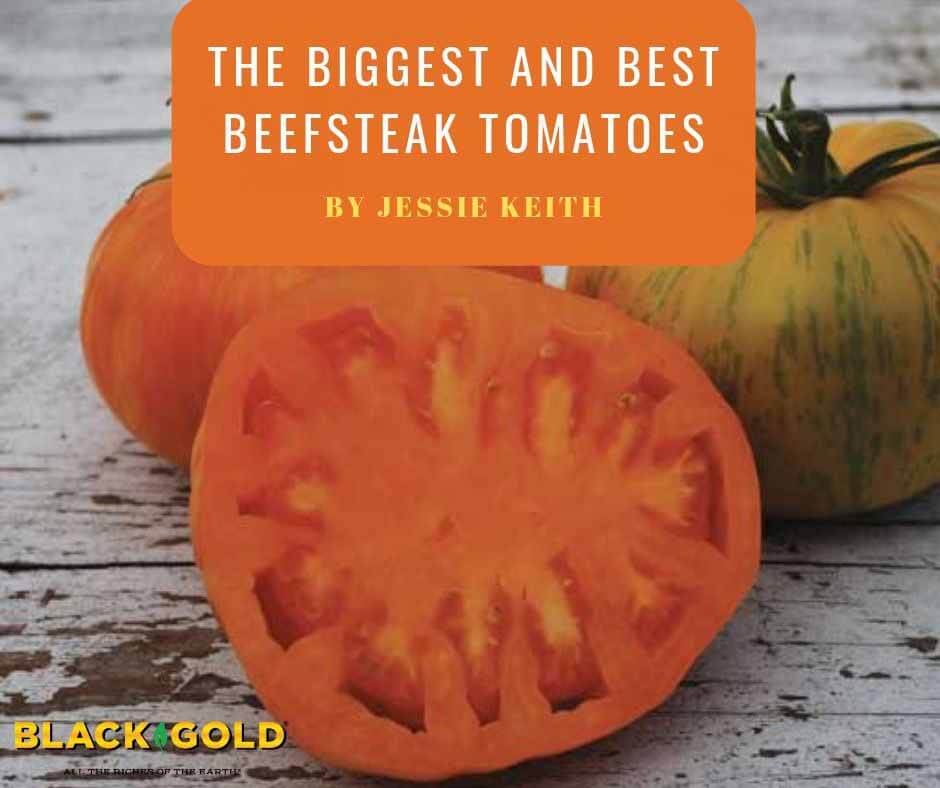
The bigger the better! This statement rings true with tomato breeders and heirloom collectors seeking to find bigger and better monster beefsteak tomatoes that don’t shirk on taste, productivity, or disease resistance. For many summer gardeners, nothing tastes better than the simple pleasure of a sweet beefsteak tomato slice drizzled with olive oil and balsamic and sprinkled with a touch of salt and pepper, and bigger just means more.
Beefsteak tomatoes are extra-large slicers that can reach a pound or more. There are a lot more to these tomato giants than reliable standards like ‘Big Beef’ and ‘Beefmaster’ grown by our parents and grandparents, as good as these varieties may be. Innovation and discovery have brought us a wealth of new beefsteaks fit for the garden. New variants come in novel and interesting colors, textures, and flavors desired by more discriminating gardeners and cooks.
Reds
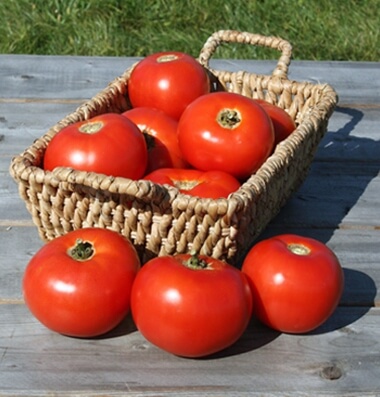
Classic red tomatoes are the most sought after for their traditional looks and rich flavor. Like red wines, red and dark colored tomatoes tend to have the richest and robust flavor. With so many great red varieties to choose from, we chose some of our absolute favorites.
Said to be one of the largest beefsteak hybrids available, ‘Steakhouse Hybrid’ is a Burpee exclusive and has red, flavorful, lobed fruits that reach up to 3 pounds each. The indeterminate (vining) plants produce well through summer. Bred by New Jersey Gardener Minnie Zaccharia, ‘Big Zac Hybrid’ is another supergiant with flavorful red fruits known to reach up to 6 pounds each—almost enough for a whole pot of sauce! Another comparable big red with big flavor is ‘Italian Sweet’, a deep red Italian slicer with notably sweet fruits that average 3 pounds each. For flawless, disease-resistant beefsteak tomatoes with smooth red skin and great flavor choose ‘Mountain Fresh Plus’. Its fruits can reach 1.5 pounds and the plants are impressively resistant to fusarium and verticillium wilt as well as root-knot nematodes.
Pinks
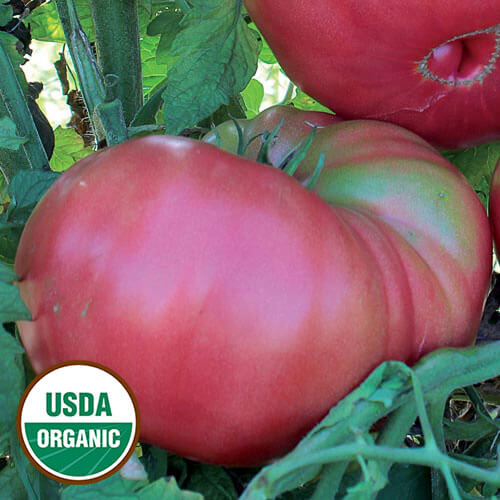
A number of pink tomatoes have robust flavor as well as good looks. Uniform in shape and with outstanding taste, ‘Mexico’ is a large beefsteak with dark pink skin that is also a high producer. Its fruits bear all season and consistently weigh around 1 pound each. Similarly, the pinkish purple ‘Boondocks’ bears 1 pound fruits with a good sugar to acid balance as does the truly pink ‘Dester’, which is very large, pretty and has an award-winning taste.
Oranges or Golds
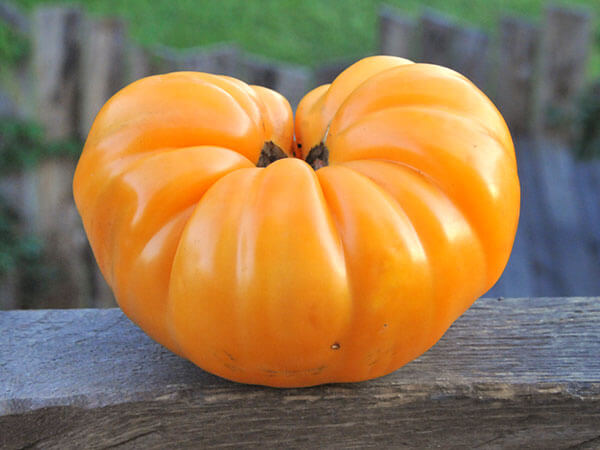
There are lots of gold, orange, and yellow beefsteak tomatoes, but many taste fairly bland or acidic. A few exceptions are huge and have a knock-your-socks-off taste.
Tangerine orange and weighing up to 2 pounds per tomato, ‘Kellogg’s Breakfast’ is a Michigan heirloom with very rich, sweet taste and dense flesh. The excellent quality of the fruit makes the moderate production of the vines worth the effort. Another American heirloom of comparable quality is ‘Kentucky Beefsteak’ with its equally brilliant orange fruits and super sweetness. As the name suggests, the meaty fruits of ‘Persimmon’ are the golden orange color of a ripe persimmon and beautifully round and uniform. One that’s a bit paler is color is the golden, sweet ‘Dr. Wyche’s Yellow’, which develops lots of 1 pounds fruits all season long.
Novelty Colors
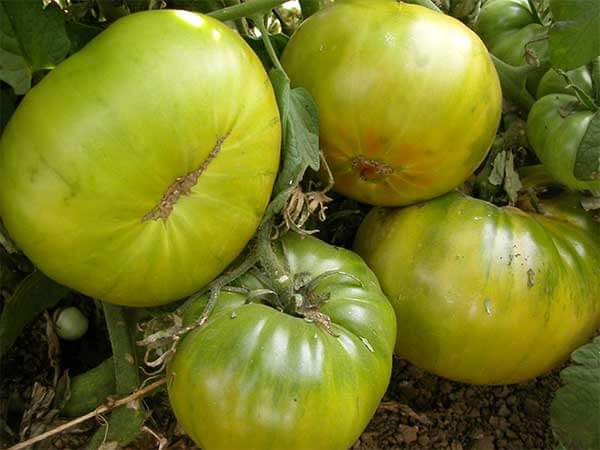
Lots of notable, new, colorful, extra-large slicing tomatoes have hit the market. One of the prettiest and newest on the market is ‘Janet’s Jacinthe Jewel’, a real beauty with 1 pound fruits that have deep orange flesh and gold and green stripes. The classic, ‘Aunt Ruby’s German Green’ is a popular old heirloom with tangy fruits that mature to bright green and can exceed 1 pound each. Try ‘Cherokee Chocolate’ for its exceptionally large, dark chocolate purple fruits.
Planting Guidelines
There are several things you can do to ensure your slicing tomatoes produce their best all season long. Amend planting beds by digging and turning the soil deeply and adding rich Black Gold Garden Compost and a fitting tomato & vegetable fertilizer. Plant tomatoes around 4 feet apart and mulch with a 2- to 3-inch layer of compost. Young plants can be planted deep, but leaves should be gently removed from all stem parts that will be covered with soil. Fit indeterminate tomatoes with a sizable tomato cage right away to support vines and fruits as plants develop. Water daily on warm days in the absence of rain. Days to harvest vary, but plants usually begin to bear fruit 65 to 85 days after planting.
Choose at least one of these outstanding beefsteak tomatoes this season, for great fresh eating. Different colored slices look great on a plate and the prettier the fruits, the easier they are to share with friends and family.
How to Manage Mice in Raised Planters

As the heat of “dead summer” begins its slow ebb into fall, it’s planting time in California and the Southwest. While most folks across the US plant in spring, here the mild fall is our second growing season for food crops. What we grow now feeds us into the holidays with roots and greens and maybe even squash or peppers with the right system and climate. I grow many ways, in raised beds with row covers, in the greenhouse and out in the open air, depending on the season and crop. This allows me to compare the methods for different crops at different times of the year.
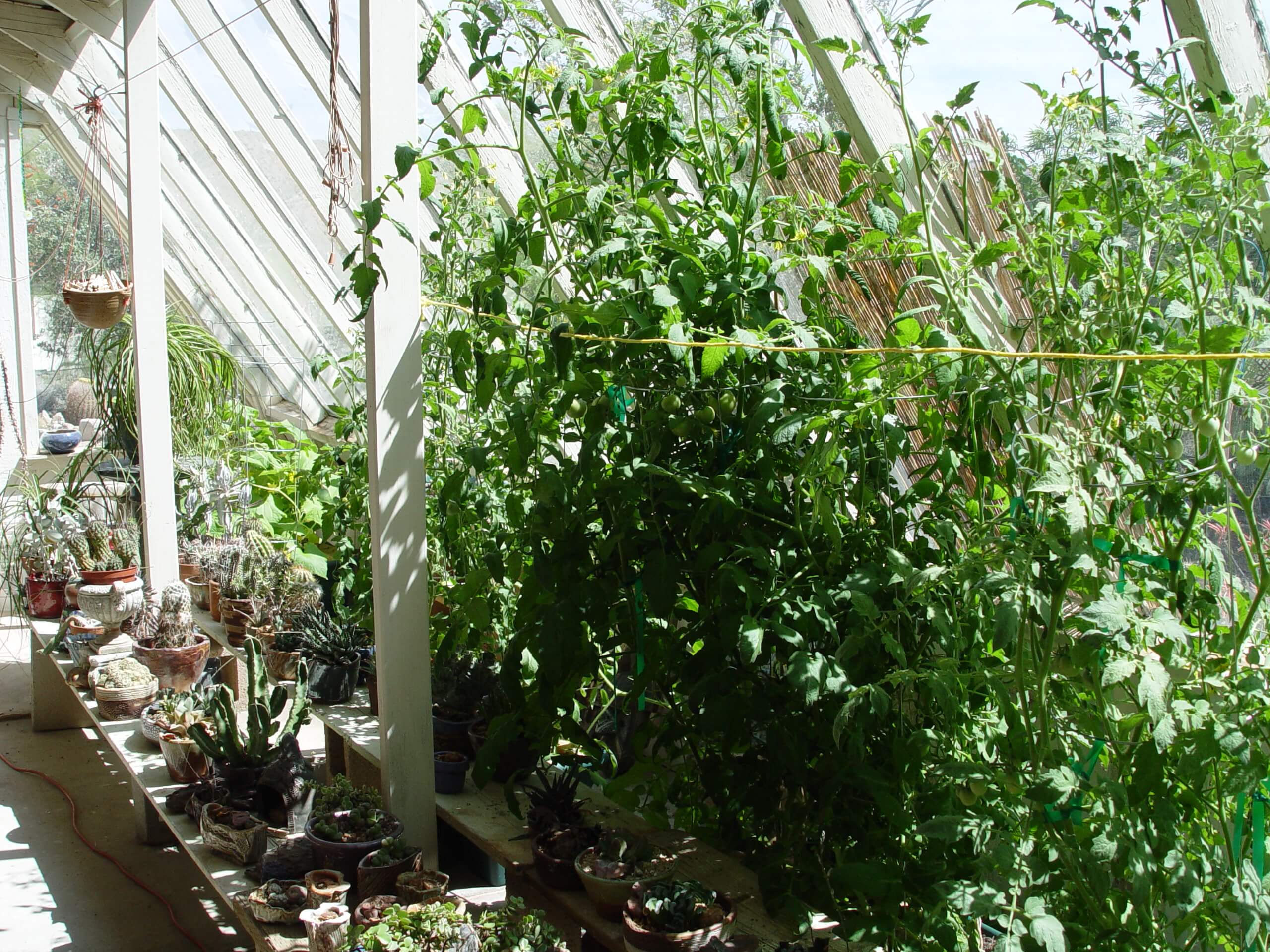
Planting Grow Boxes
Last year I tested Grow Boxes in the greenhouse attached to the south side of my home. With such low humidity in the desert, these boxes with their 4-gallon reservoir keep plants far better hydrated than any other method. The box is designed so plants produce long trailing roots that dangle into a large water reservoir sucking up all the moisture they need rather than being limited to watering times. Last year I planted the boxes with tomato seedlings in February when high UV in the desert allows greenhouse growing in the high desert and year around in the low desert.
I selected ordinary tomato varieties to evaluate how well the boxes work here. Because indeterminate tomato varieties are long blooming, I wanted to determine if my tomatoes could indeed become perennial and produce year around without frost. I was thrilled to find the seedlings literally exploded out of the boxes and never stopped growing or producing new fruit until that sudden August decline. The tomato plants quit taking up water, became discolored and generally failed for no particular reason. And whenever I don’t know the reason, my mentor always advised, “dig a hole”.
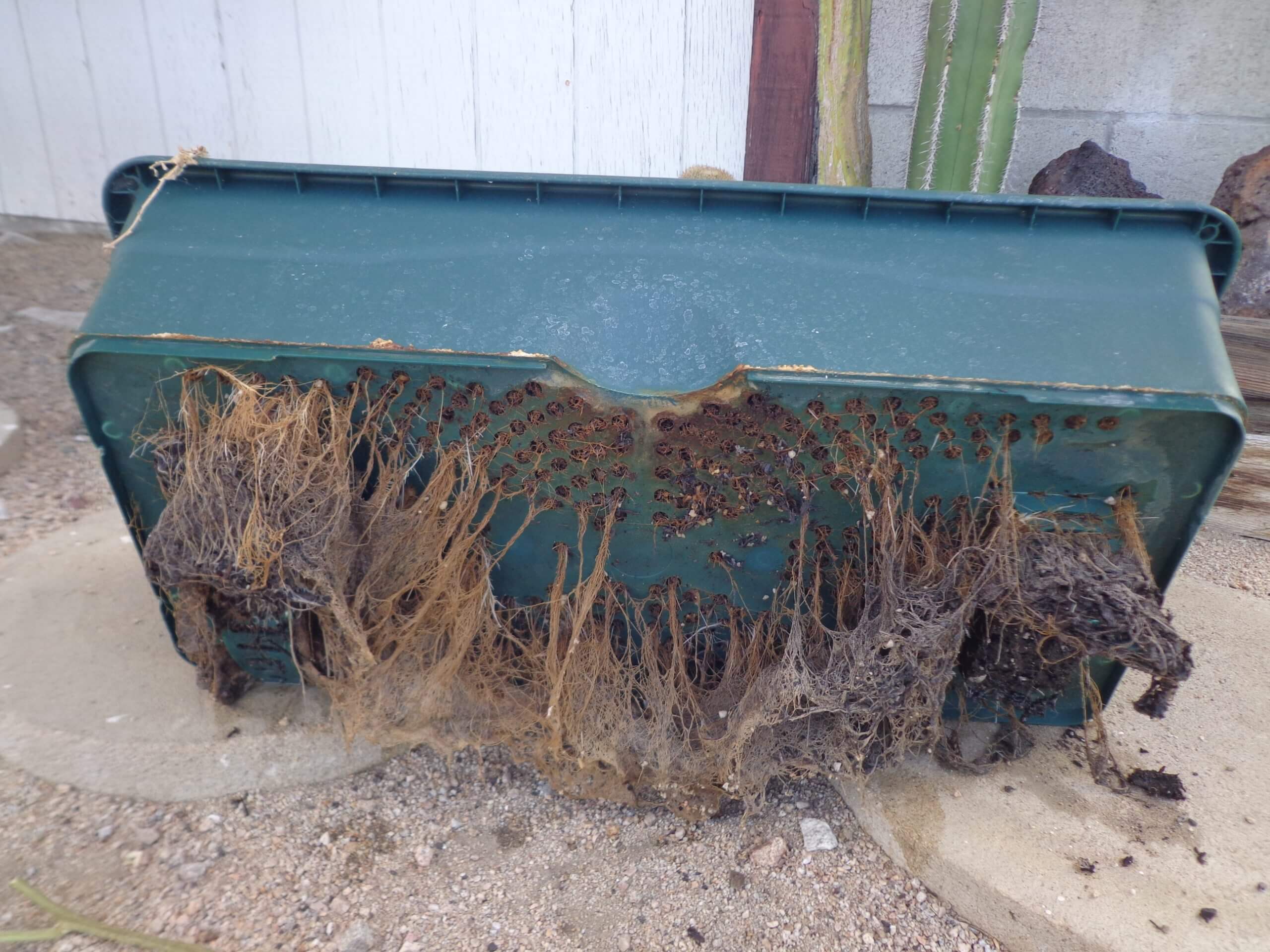
Managing Mice in Grow Boxes
The cause was revealed when I disassembled the boxes to take my first glimpse at the roots that should dangle down into the water reservoir. They were gone! I discovered this was due to a design flaw of the Grow Box: reservoir accessibility to mice in my greenhouse during our blistering desert summers when they are keen on cool, moist places. The Grow Box opening for water access is easy for any small rodent or insect to enter. When water was low or dry in between fill-ups, the mice entered the reservoir and literally ate all the dangling roots, explaining why my tomatoes suddenly quit taking up water. We finally captured the mice, but there may be more in the future. I’ll be fashioning a hardware cloth cover for the fill holes of my six Grow Boxes to keep smaller creatures out, or the very same thing will happen again in this rodent-rich desert, particularly if grown outdoors on porch or patio!

This year I upgraded and replaced the potting soil with Black Gold Moisture Supreme Container Mix with RESiLIENCE®, which I hope will enhance the wicking crucial to the function of the Grow Box. This year I will test fall-planted vegetables in the greenhouse Grow Boxes to learn whether the fruit will ripen in November, despite cooler weather and shorter days. Only testing will prove whether plants that require pollination and long, hot days to ripen can be coaxed to fruit in the short, dark, cool winter.
Here in the desert, and everywhere else that is difficult to grow things, these quasi-hydroponic Grow Boxes are an ideal way to keep plants fully hydrated and healthy. They are a useful solution to grow efficiently in drought. And now with Moisture Supreme, they will be better able to take the heat, and perhaps I will finally learn whether or not indeterminate tomatoes can indeed be grown year round in my greenhouse.
Three Drought Strategies for Tomatoes
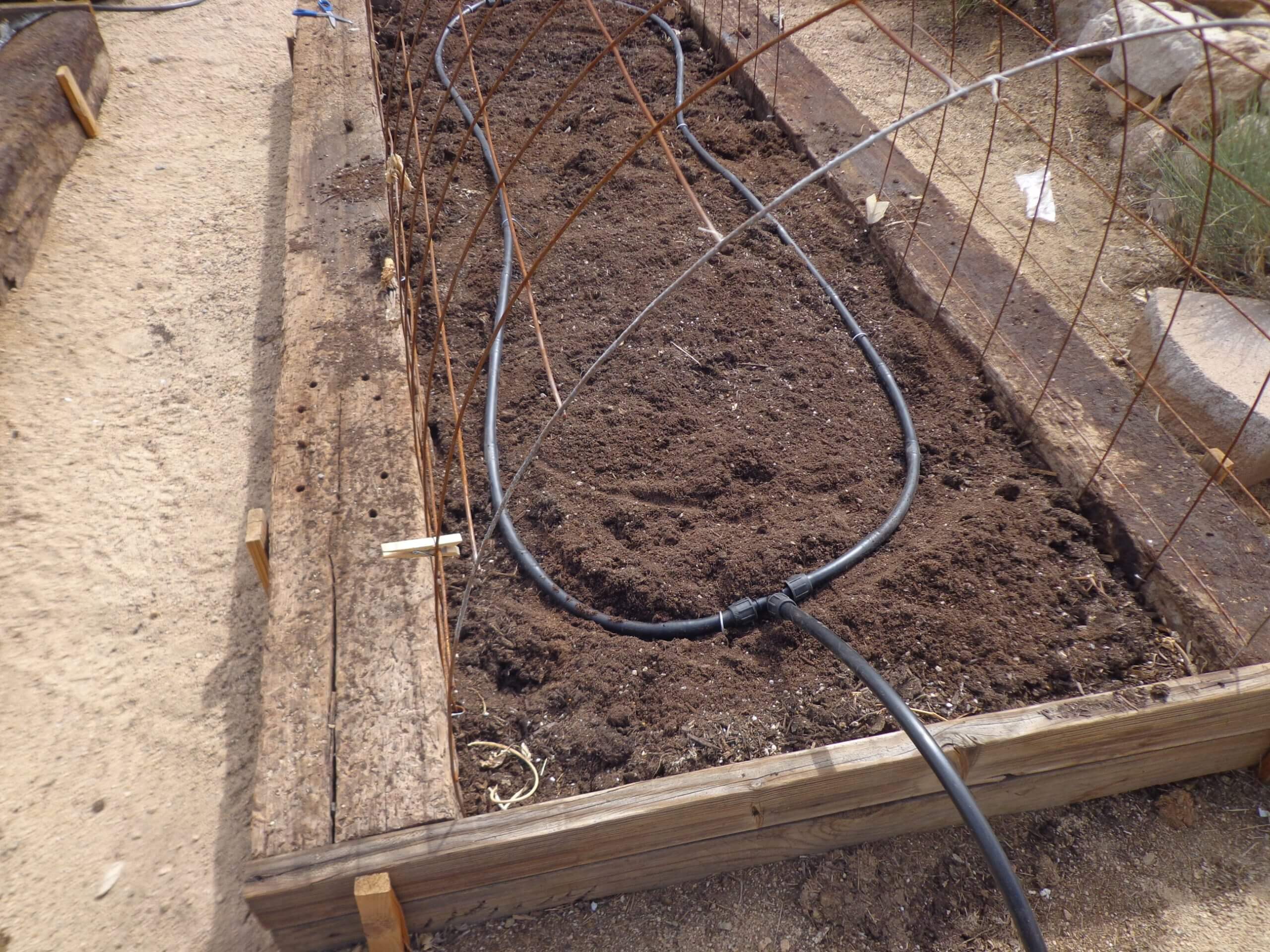
With statewide mandatory cutbacks in California water due to drought, we can’t grow vegetables the same way we used to when water was more plentiful. In the desert, where water is precious and expensive, we’ve learned many ways to help vegetables grow in the heat with minimal irrigation. Since tomatoes are always the favorite crop of home gardeners, the goal is to help them get a really strong start for greater resilience when stressed in the dead heat of summer. Here are a few smart drought strategies for tomatoes.
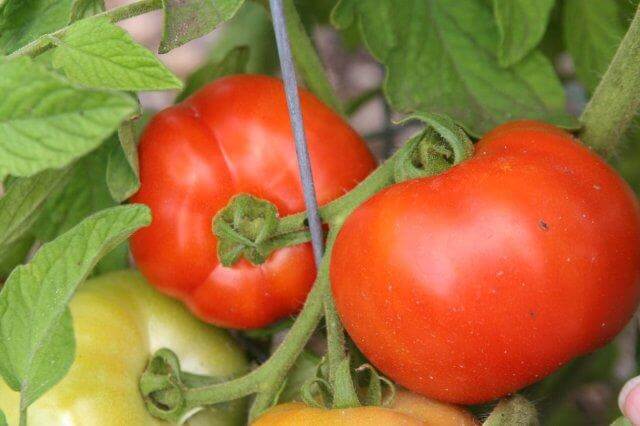 1. Increase Water-Holding Potential
1. Increase Water-Holding Potential
Potting soils designed for dry climates have an increased ability to absorb and hold moisture for much longer than average garden soils. When planting your tomatoes in containers, use Black Gold Waterhold Cocoblend Potting Soil or Black Gold Moisture Supreme Container Mix (with RESiLIENCE®) For planting in ground, blend equal part Black Gold Just Coir and Black Gold Garden Soil, then work a generous amount into the soil of planting area to capture and hold moisture immediately around young growing roots.
2. Train for a Larger Root System
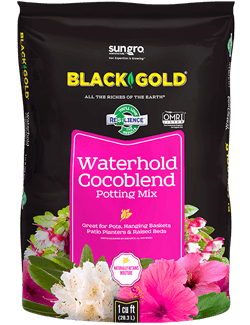 Drought-resistant plants often share large adventurous root systems to access trapped moisture far underground. When tomatoes are planted like other crops, the root system remains relatively small. But if you plant your tomatoes lying down in a trench, they develop prodigious roots all along the buried stem. With a far larger root system that tomato will have much greater ability to survive heat with minimal moisture.
Drought-resistant plants often share large adventurous root systems to access trapped moisture far underground. When tomatoes are planted like other crops, the root system remains relatively small. But if you plant your tomatoes lying down in a trench, they develop prodigious roots all along the buried stem. With a far larger root system that tomato will have much greater ability to survive heat with minimal moisture.
3. Mulch like Crazy
Perfect magazine-quality food gardens will soon be a thing of the past because thick mulches are more important than ever to conserve water. The thicker the mulch layer, the less soil moisture is lost to surface evaporation. For larger gardens, invest in a bale of straw to cover all exposed soils, including pathways, to keep the overall soil mass evenly cool and moist. Plan to thicken or renew mulches periodically throughout the growing season.
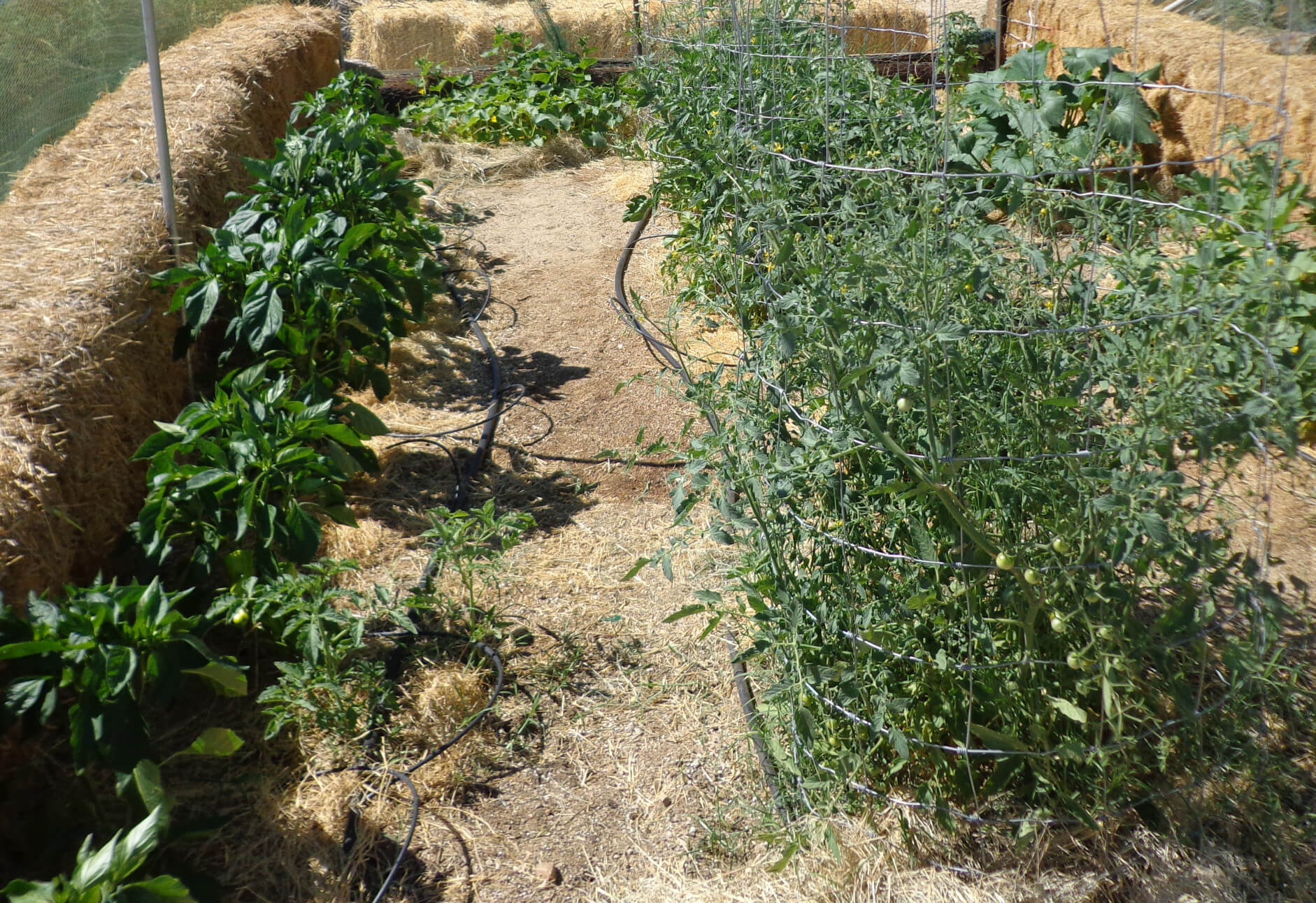
Finally, be conscious of every pitcher, glass, or bottle of water you pour down the drain as well as water that runs as you’re waiting for the hot water before doing dishes or taking a bath. Homes with a long distance from hot water heater to sink may require many gallons to pass through before you get water hot enough. If you keep a plastic pitcher under the sink, every time there’s clean water that would otherwise be poured down the drain, dump it in the pitcher. When full go out to your tomatoes or any other plant, and pour it on.
Growing Tomatoes from Seed to Harvest

Homegrown summer tomatoes simply taste better. That’s why they’re the most popular warm-season crop. They are inexpensive to grow and offer big payloads of delicious fruits, which are pricy at farmers’ markets and grocery stores. It pays to grow your own from seed because they are easy to start, and if you grow organically it’s the best way to know that your stock is pesticide-free. And, there are loads of wonderful tomato varieties only offered from seed.
Tomato Basics
- Common Name: Tomato
- Botanical Name: Lycopersicon esculentum
- Days to Harvest: 65 to 85 days after planting, depending on the variety
- Planting Time: After the last frost date
- Light: Full sun
- Soil: Rich, porous, well-drained loam
- Water: Regular water for even moisture
- Temperature: Fruiting is best with 78 -92ᵒ F days and 70ᵒ-80 F nights.
- Fertilization: Quality fertilizer formulated for tomatoes
- Pests: Tomato hornworms and Colorado potato beetles feed on foliage and fruits, causing significant damage.
- Diseases: Plant wilt, leaf damage, fruit damage, or poor performance can be caused by many tomato diseases, including early and late blight, fusarium wilt, tomato mosaic virus, and verticillium wilt.
- Disorders: Blossom end rot (caused by calcium deficiency), splitting/cracking (caused by excessive water or temperature fluctuations), and fruit toughness, cat-facing, and reduced productivity (caused by cool temperatures) are the most common disorders.
Days to Harvest Steps for Tomatoes
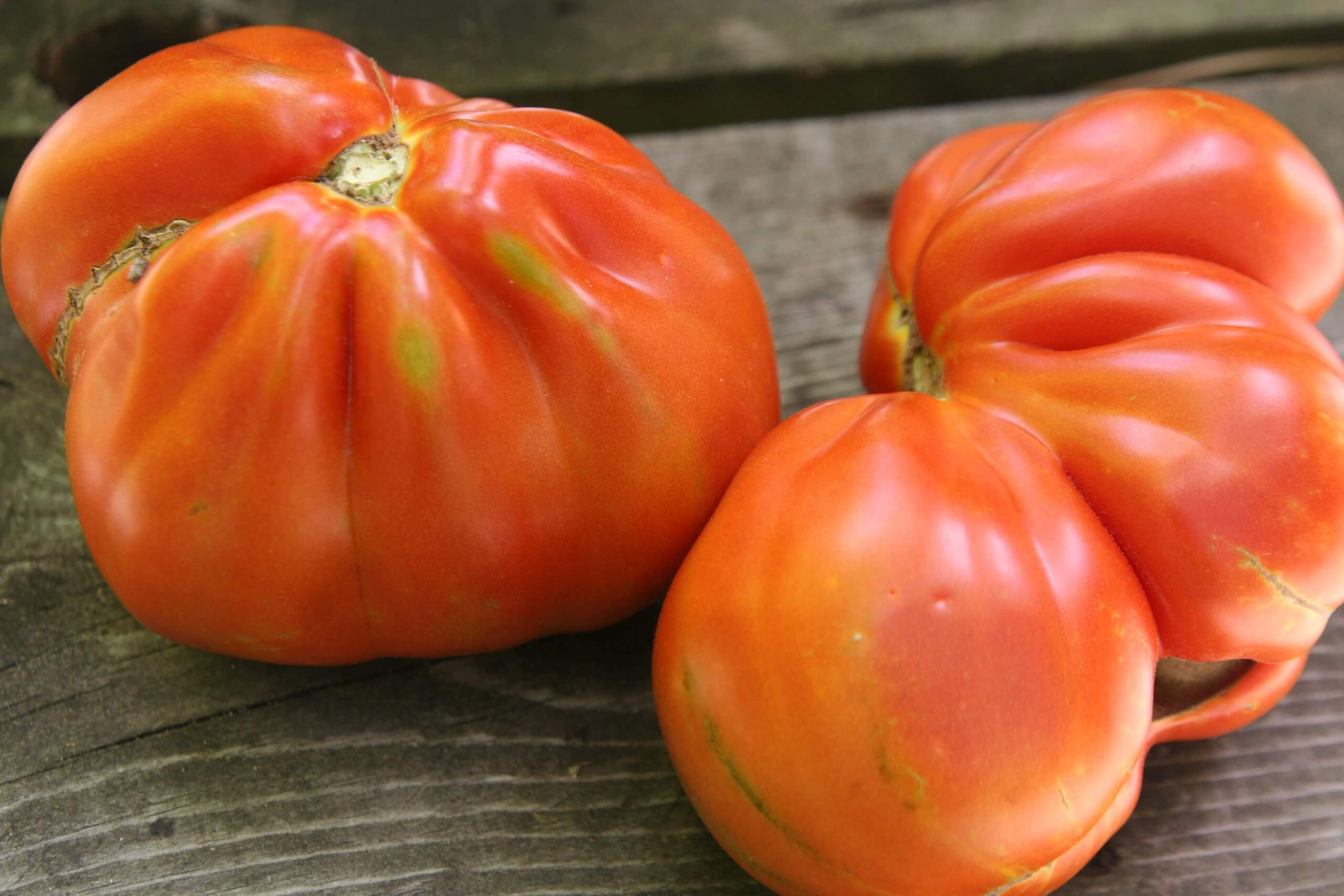
Starting Seeds
It takes around six to eight weeks to grow tomatoes from seed to ready-to-plant seedlings. Start seeds indoors for the best results. Sow seeds in cells filled with OMRI Listed Black Gold Seedling Mix and lightly sprinkle a bit on top to cover. Gently moisten the cells with water, and then place the trays right under the warmth of grow lights. Keep the mix moist but never wet. In 5 to 12 days, your tomato seeds should germinate. Germination is best when temperatures are warm (68°-75° F (20-24° C)). A heat mat for seed starting will dramatically hasten germination. (Click here for more detailed seed-starting instructions.)
Tending Seedlings
Tomato seedlings are delicate and have two lance-shaped seed leaves when they first emerge. The true leaves, which are feathery and divided, appear in 2 to 3 days. At this point, feed seedlings with diluted, water-soluble tomato fertilizer. Keep the soil moist but not wet. Wet soil can encourage fungal diseases that cause seedlings to rot or “damp off.” To avoid leaf burn, lift grow lights up as plants get closer to the bulbs.
Tending Small Plants

Tomato plants should be around 8- to 10-inches tall and garden-ready after eight weeks. Indoor grown seedlings are tender, have weak stems, and need time to adjust to full sun. If directly planted outdoors, they will develop leaf burn and may die. To avoid this, they need to be hardened off for at least a week before planting. Hardening off means acclimating seedlings from their cushy indoor growing conditions to the windy, sunny outdoors where temperatures fluctuate.
To harden seedlings off, place the potted plants in a protected spot that gets a few hours of sun per day. Each day move them to a new location where they get a little more light and wind each day. After a week or so, they should be tough enough to plant in the garden.

Garden or Container Planting
Choose a good spot for your tomatoes. They require at least 8 hours of full sun and well-drained soil that’s fertile. Vining (indeterminate) types need caging or trellising, while bush (determinant) types need staking; both types benefit from summer pruning.
Before planting in the garden, amend beds by digging and turning the soil deeply and adding rich Black Gold Natural & Organic Compost Blend and an OMRI Listed tomato fertilizer. Plant tomatoes around 4 feet apart and mulch with another 2- to 3-inch layer of Black Gold Natural & Organic Compost Blend. Young plants can be planted deep, with only several leaves above ground–just be sure to gently remove the leaves from all stem parts that will be covered with soil. Water regularly to keep root moist. As plants grow, they will demand more water.
Tomatoes are such aggressive feeders and water hounds that you have to give serious attention to container-grown plants. Start with a really large pot. Determinant tomatoes are best, but indeterminates will also work if you keep them well caged and pruned. A good, water-holding potting soil is perfect for container culture. I recommend Black Gold® Natural & Organic Potting Mix, which also contains Resilience™ for stronger stems and better root development. Container-grown tomatoes need to be watered daily and fed more frequently, but if you give them ample attention, they should thrive and produce beautifully. (Click here to watch a video about how to grow tomatoes in containers.)
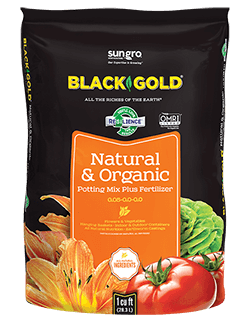 Harvest
Harvest
Tomato fruits develop the best when days are warm (between 78 and 92 degrees Fahrenheit) and nights are warm (at least 70 degrees Fahrenheit). Tomatoes can be harvested green for fried green tomatoes and green tomato chutney, but they are best picked when they are fully ripe (well colored, slightly soft to the touch). Some tomatoes are naturally easy to pull from the vine when mature, while others cling. I always keep a pair of pruning sheers on hand for clingers. If you accidentally harvest a few fruits with a bit of green, let them stand on a sunny windowsill for a couple of days, and they will ripen up right away.
Pruning
Tomatoes can be cut and shaped to keep them from overtaking a trellis or container. Use sharp, clean pruners to cut whole branches back to main stems as needed. Try to maintain productive fruit and flower-laden branches, if at all possible. As a precautionary measure, it’s wise to dip pruners in a 10% bleach solution when pruning from plant to plant, just to avoid the possibility of spreading disease. Dip and wipe the pruners after pruning one plant and going to another. (Click here for a video about how to prune cherry tomatoes.)
Tomatoes to Try
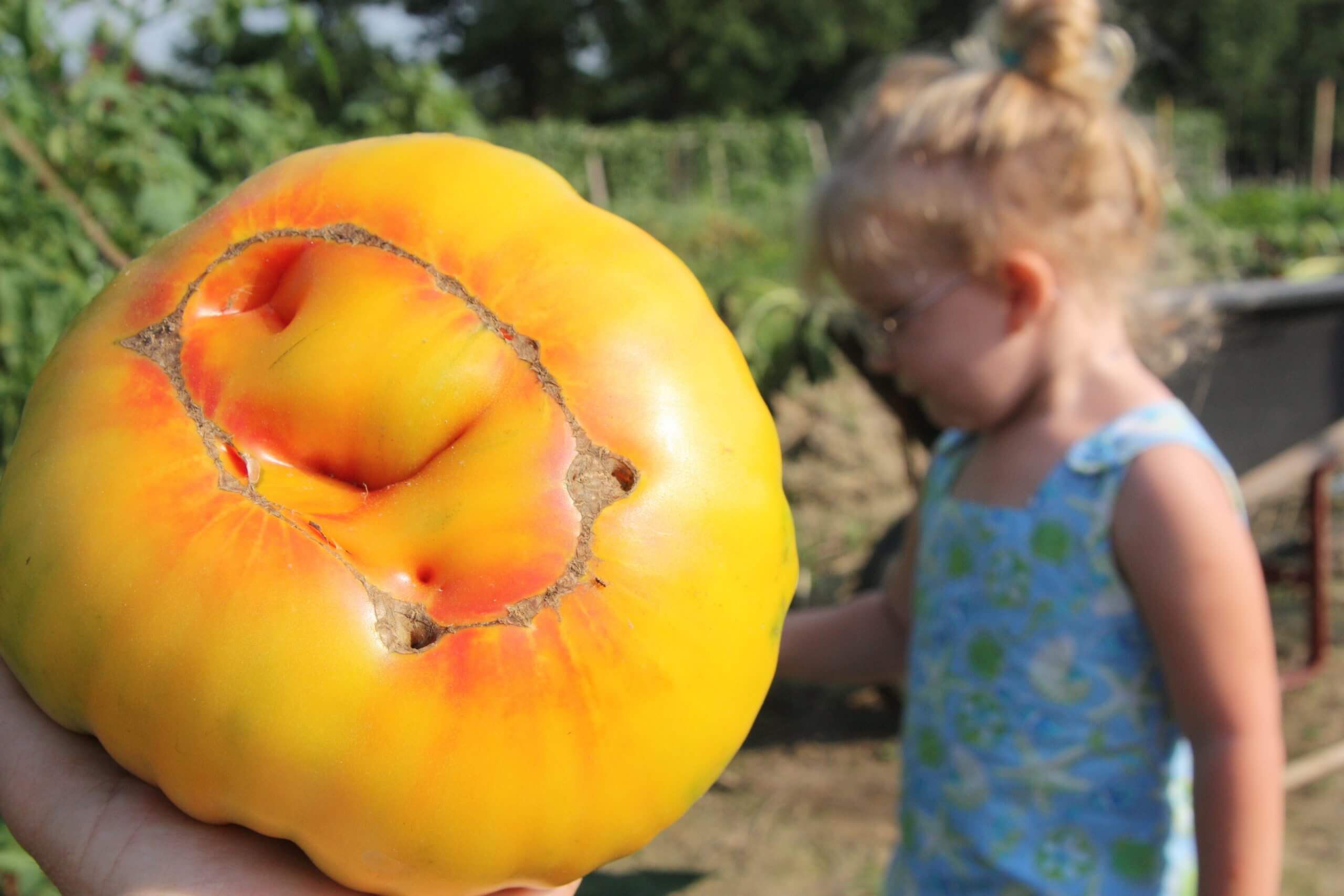
Tomatoes come in all colors, shapes, and sizes and their flavors are surprisingly variable. In my garden, I always choose several slicers, sauce tomatoes, salad tomatoes, and cherries each year. Some of my favorite pickings include the heirloom red and yellow slicer ‘Gold Medal‘, the French salad tomato ‘Crimson Carmello‘, and orange beefsteak ‘Kellogg’s Orange Breakfast‘. My favorite sauce tomatoes are the Italian powerhouses ‘Red Pear‘, ‘San Marzano Redorta‘ as well as the salad-sized ‘Principe Borghese‘, which is touted as the best tomato for sun drying. My cherry tomatoes of choice are the sweet, golden ‘Sun Gold‘, tiny red ‘Matt’s Wild Cherry‘, and delectable yellow and red ‘Isis Candy‘. All are beautiful and have exceptional flavor.
Enjoy Your Tomatoes
This is the easy part. Lavish burgers with big, hearty tomato slices, eat them fresh in salads or make homemade tomato sauce and salsa. To extend the season, freeze whole tomatoes and sauce for winter. (This generally requires at least ten healthy tomato plants to provide enough to store through winter.)
Growing tomatoes is gratifying if you follow the proper steps and give them the best care. If you do it right, you should have more than enough tomatoes to enjoy and share. I wish you the best tomato season!
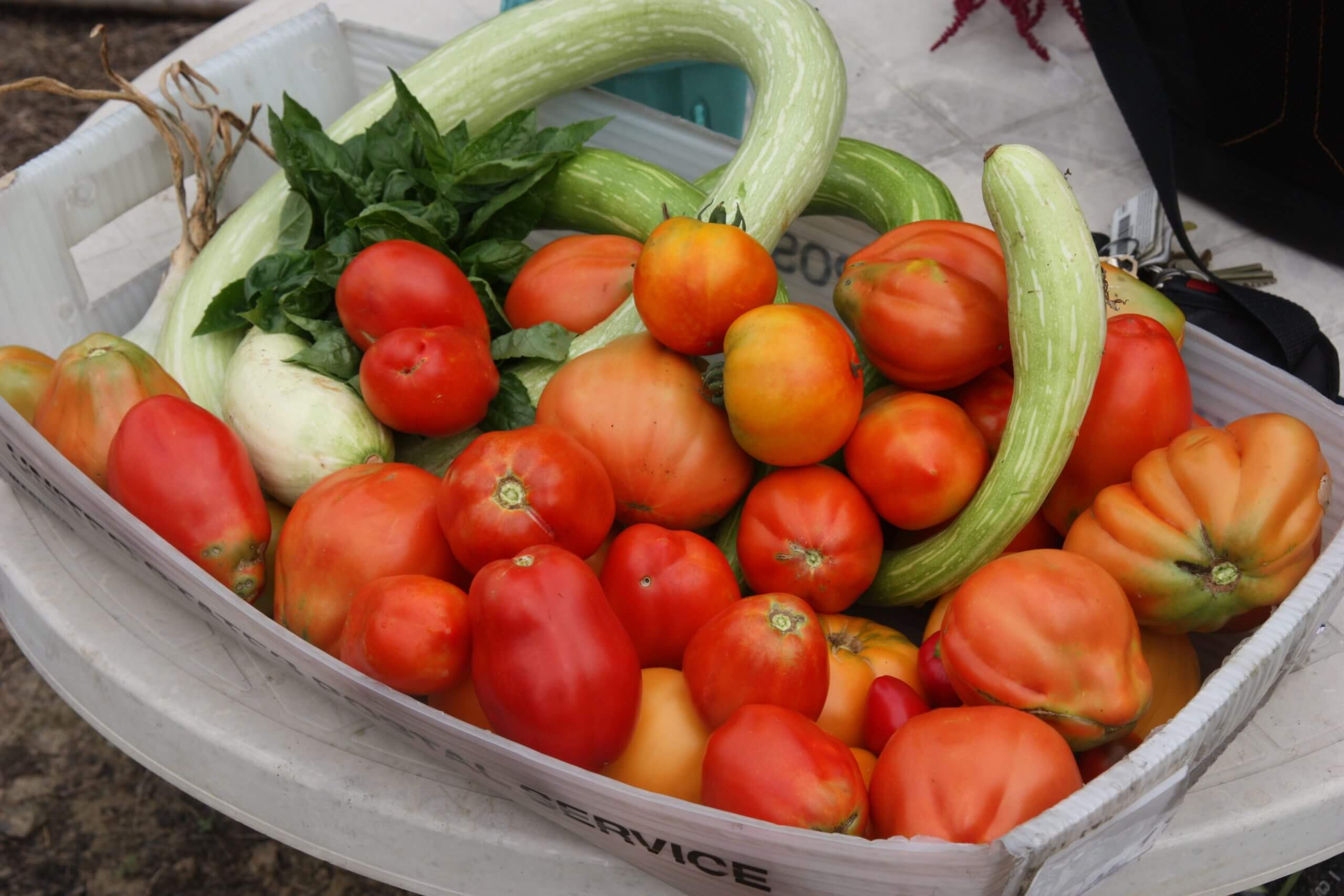
Raised Bed Rotation and Rejuvination
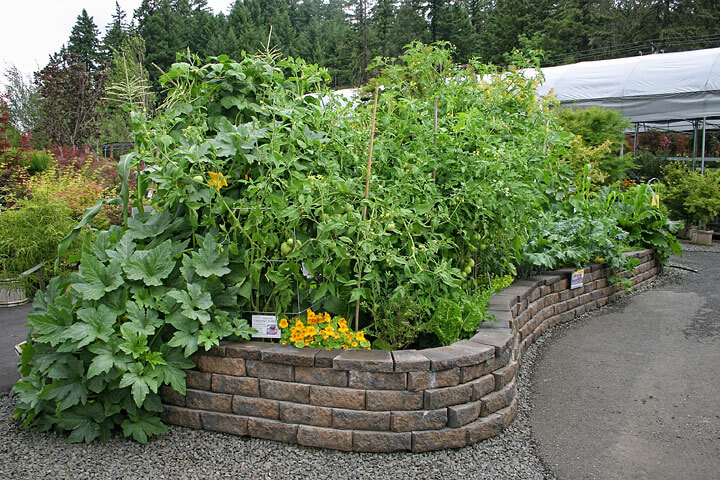
Mothers always admonish us “not to hang out the dirty laundry”, which is code speak for keeping unpleasant family secrets out of neighborhood gossip. This same problem is afflicting the raised bed garden world where nobody wants to hear the downside of these tiny plots of food plants. At the heart of it is the very old concept of crop rotation. Even the ancients knew that crops grown in the same place year after year developed big problems without rotation.
Why Rotate Crops?
The science is quite simple because diseases and pests can accumulate every year you cultivate a small vegetable garden. It may not be visible the first or even the second year, but by year three it can strike with a vengeance. This is how long it takes for your soil to foster a killer dose of pests and pathogens.
Imagine a 4-foot-by-8-foot planting area (the size of a typical raised bed) that you grow tomatoes in year after year. A mature tomato can occupy half that square footage, with its roots fanning out over the area underground. To properly rotate your crops, you must not grow tomatoes in the same place you did the previous year. In this case, the only choice is to plant on the opposite end of the raised bed. That leaves only two possible spots for the tomatoes.
Farmers know to rotate their fields over four years to ensure healthy crops. That’s four entirely different growing areas for crops in the course of four years; three years with the crop being grown in a different spot and a fourth year for a given growing area to lay fallow to “rest”. But farmers have space for rotation. What about home gardeners working within the confines to small raised beds? Without sufficient space for rotation, the results can be devastating.
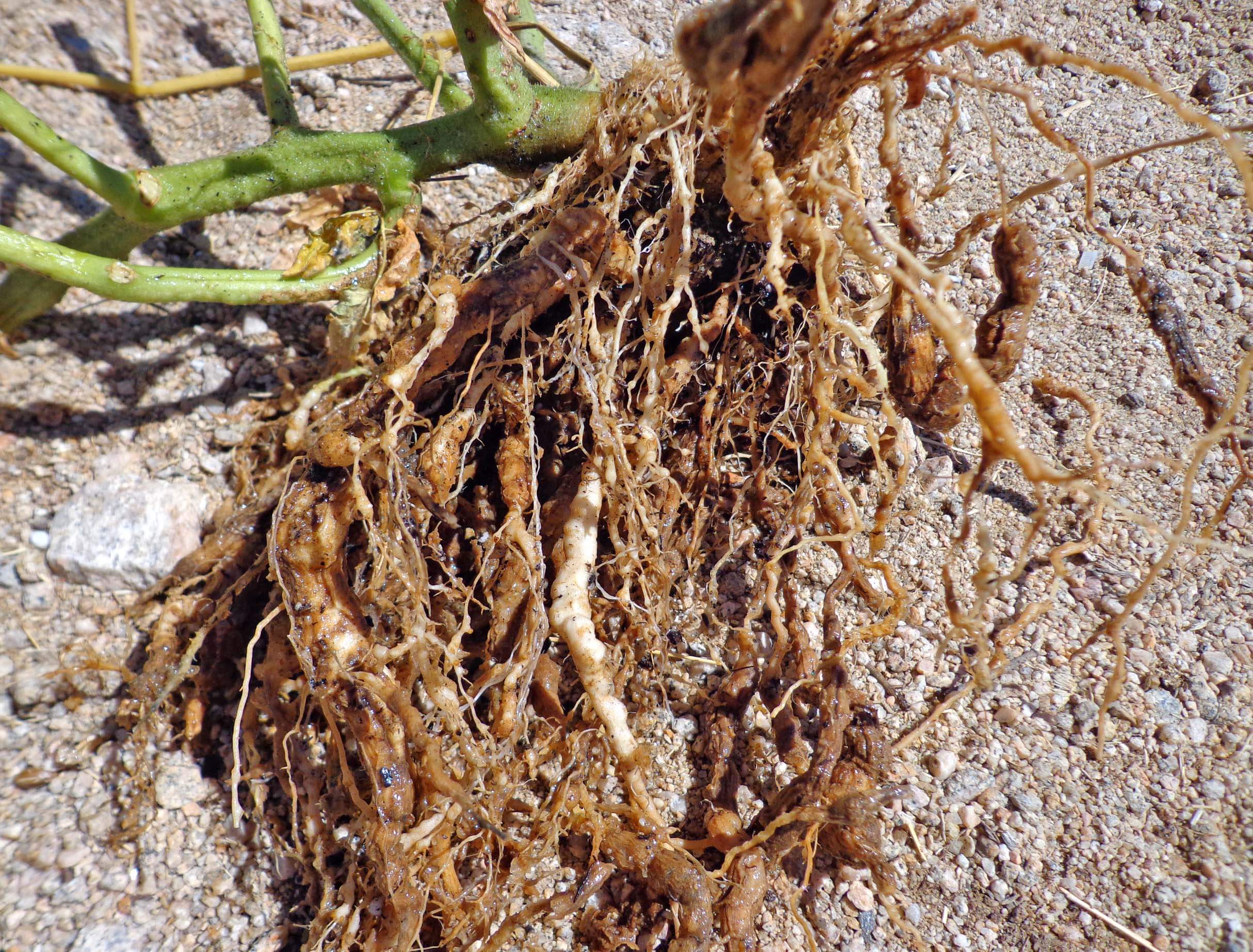
For example, a microscopic pest called root-knot nematode often strikes when tomatoes are grown in the same location or very close-by year after year. This pest is invisible to the eye and is common to most soils but present in such small numbers that it doesn’t cause serious problems. But when tomato crops are not rotated, these nematodes multiply to fatal proportions. As a result, tomato plants begin to turn yellow and die because too many nematodes have invaded their roots. No matter how much you water or fertilize, nothing will change this downward spiral.
You won’t know the cause until you pull up an ailing or recently deceased plant to see first hand what the roots look like. Root-knot-nematode-infected roots look bizarrely knotted and swollen and are obviously unable to support the plant. As tomato fruits mature and heat stimulates growth, the plants can’t keep up. There is no cure for badly infected plants, and fear of this organism is why gardeners often plant big African marigolds (Tagetes erecta) around food plants because it is known to discourages nematode populations.
Replace Old Soil
Rotation is key, but soil replacement can also work wonders towards keeping raised bed problems at bay. Replacing your garden or potting soil with fresh every other year will help discourage the accumulation of diseases and pests, such as the root-knot nematode. Quality garden soil like Black Gold Garden Soil is rich, fertile, and fresh. It reduces the need to rotate crops, will fortify your garden to increase yields, and rid your raised bed of “dirty laundry” that could mean the downfall of your summer garden plantings.
The more cautious your are about ensuring healthy soil for your raised garden, the better. For example, if you move into a new home with an existing raised garden, it’s best to assume its potting soil is nutritionally exhausted and that crop rotation has not occurred. Plus, it’s just a good idea to replace the soil anyway because the removal process may give you clues to other problems, like drainage or the presence of aggressive underground grass roots. Excavation will help you discover if there are problems lurking below.
Small gardens don’t have to be hotbeds of pests and diseases, if you know how to compensate with rotation and garden soil replenishment. Rotate your crops liberally (preferably on a 4-year cycle), replace old, spent soil, and reap the harvest!
Easy, Garden-Fresh Summer Salsa

Warm, late-summer days mean lots of tomatoes, peppers, onions, garlic and warm-season herbs for ardent gardeners and farmers market lovers. And what do these veggies all have in common? They’re the ingredients for homemade salsa—making this the best time of year for salsa making and canning. The bigger the batches you make, the more you have to enjoy through late fall and winter when summer is nothing more than a sunny memory. Continue reading “Easy, Garden-Fresh Summer Salsa”
Extending the Vegetable Harvest in the Southwest

Out here in the dry western states, the growing season is far longer than most realize. We plant earlier, our plants peak earlier, and by the time the heat of late July and August rolls around, growth and yields have slowed considerably. This is partly due to temperatures flirting with 100 degrees Fahrenheit in low humidity, which halts flower production, slows fruit production, and stimulates pests, like wooly aphids and spider mites. Once the days cool at the start of September, the month of the Equinox, many summer vegetable plants like tomatoes start to flower again and will produce a secondary crop, but only under the right conditions.
Continue reading “Extending the Vegetable Harvest in the Southwest”
New Tomatoes for 2014

Tomatoes are the major players in my vegetable garden each year. This is not only because they are delicious summer staples, but they are also expensive and diverse varieties are harder to come by at stores and even farmers markets. It’s so much nicer to pick them straight from the garden anyway. That’s why cool new tomatoes are the first veggie introductions I look for each season.
Craig LeHoullier’s (aka NC Tomato Man’s) Top Six Heirloom Tomatoes
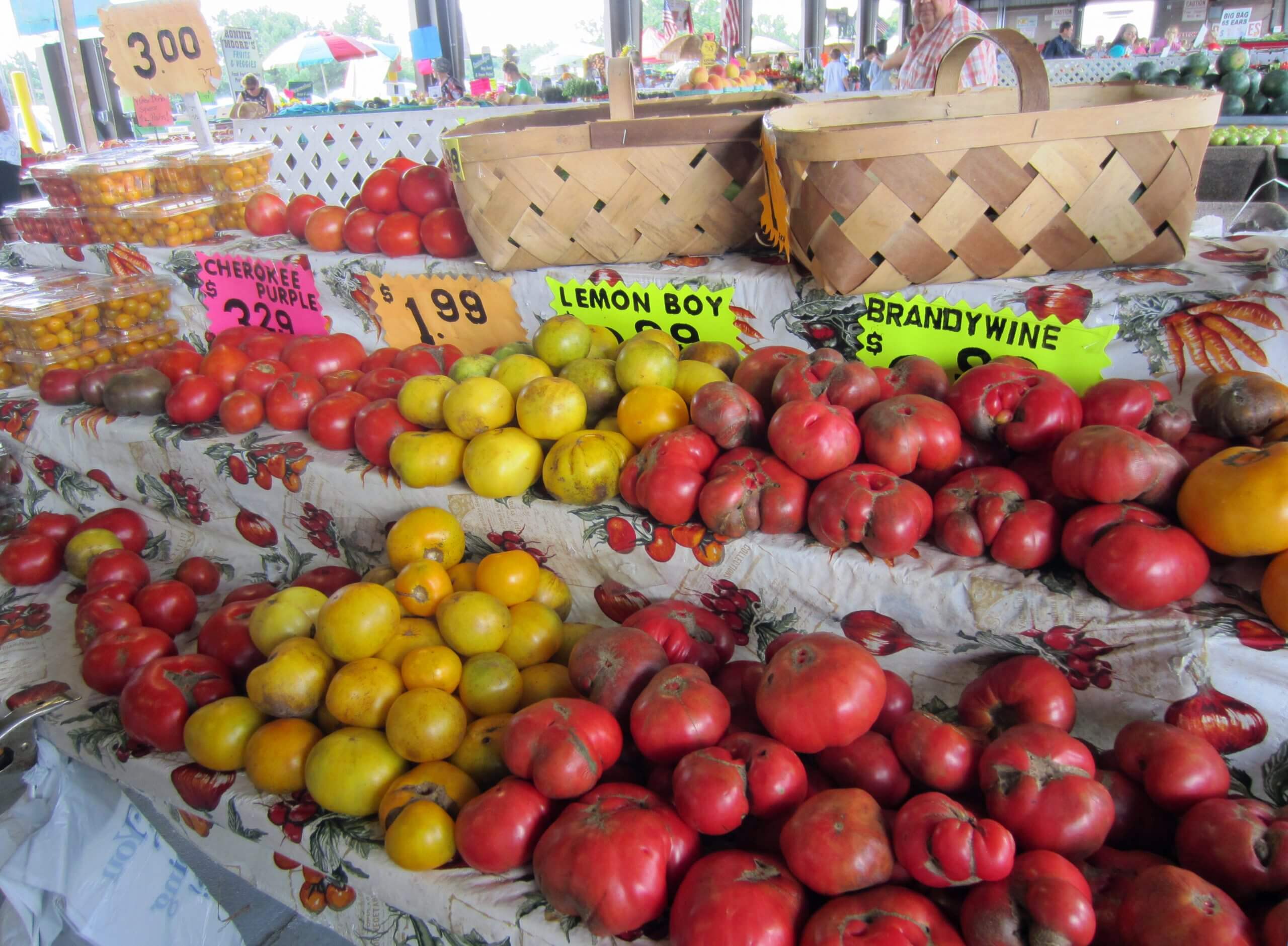
I hated tomatoes as a child. You couldn’t get me to eat one, even with sugar sprinkled on it. The only tomato-based products that passed my lips were ketchup on a hamburger or watery spaghetti sauce. Then I married a wise man who insisted that our first home wouldn’t be complete unless there was a vegetable garden in the back yard with tomatoes. I had to agree with him that a homegrown beefsteak tomato was pretty good on a BLT and that tiny cherry tomatoes fresh from the garden did add a special je ne sais quoi to a salad. But still, I was confused. Why was this plain vegetable/fruit so prized by so many?

Then, in the mid-1990’s, I met Craig LeHoullier, a man who speaks about tomatoes the same way a connoisseur describes vintage wines, fine antiques or classical music. His tomatoes are heirlooms. They have names, family histories, and, most importantly, incredible flavor.
LeHoullier is a retired chemist living in Raleigh, North Carolina, where he sells old varieties of tomatoes, hybridizes his own, writes about tomatoes (see The American Gardener Magazine, March/April 2013, A Spectrum of Heirloom Tomatoes), and frequently lectures about them. He is considered one of the country’s heirloom tomato experts, writing under the name NCTomatoman.
Years ago, I asked LeHoullier why he invests so much of his free time growing heirloom tomatoes. He passionately explained, “These tomatoes cannot be commercialized. Their skins are thin, and they are too juicy to be shipped. They must be grown in home gardens. We can’t let these genes disappear.”
“What are your favorite tomatoes?” I followed, not knowing that he had grown over a thousand varieties. LeHoullier quickly began listing the attributes of this oxheart or that potato-leafed variety, including where he first got the seeds and the details of his own growing experiences. I marveled that he could remember all his tomatoes like they were his children. LeHoullier modestly confessed to having a photographic memory.
Since most of us don’t have this gift, here is a short list of six of his all-time favorites:
- ‘Anna Russian’: A large-fruited, pink, heart-shaped tomato that’s early to bear, this variety has excellent flavor, lots of seeds and dates back to around the turn of the twentieth century. LeHoullier initially received his seeds from Brenda Hilenius of Oregon, who received hers as a family hand-me-down. According to family legend, these seeds were shared by a Russian immigrant.
- ‘Cherokee Purple’: Characterized by a most unusual color, this purple-skinned, red-fleshed, green gel-filled beauty is sweet tasting, like a tomato fruit should be. The pass-along plant came to LeHoullier in 1990 by way of J.D. Green of Sevierville, Tennessee, who told LeHoullier that a local Cherokee tribe shared it with his neighbors a century ago. LeHoullier named it, promoted it, and now ‘Cherokee Purple’ is a familiar favorite at local farmer’s markets.
- ‘Mortgage Lifter’: LeHoullier describes this variety as “fantastic.” It is a large, flattish, pink tomato weighing up to three pounds. The story goes that it was the result of hybridizing by “Radiator Charlie” Byles of West Virginia around 1920. By selling his disease-resistant creation, Byles was able to pay off the mortgage to his property, hence the name’s origin.
- ‘Hugh’s’: A late-season, 2-3 pound, lemon yellow tomato from Archie Hook of Indiana, ‘Hugh’s’ is another sweet variety that disproves the myth that yellow tomatoes are bland. Delicious and prolific, it is a favorite among gardeners who save seed.
- ‘Ruby Gold’: A large bicolored beefsteak with yellow fruit marbled in red, ‘Ruby Gold’ is LeHoullier’s favorite sweet slicer for cheeseburgers.
- ‘Brandywine’: LeHoullier explained that he had to grow three batches of tomatoes that were called ‘Brandywine’ before he found the real thing. The correct variant was worth the search. It has large red fruit and usually matures mid-season. The true ‘Brandywine’ is the tomato that others are often judged against for both flavor and hardiness.
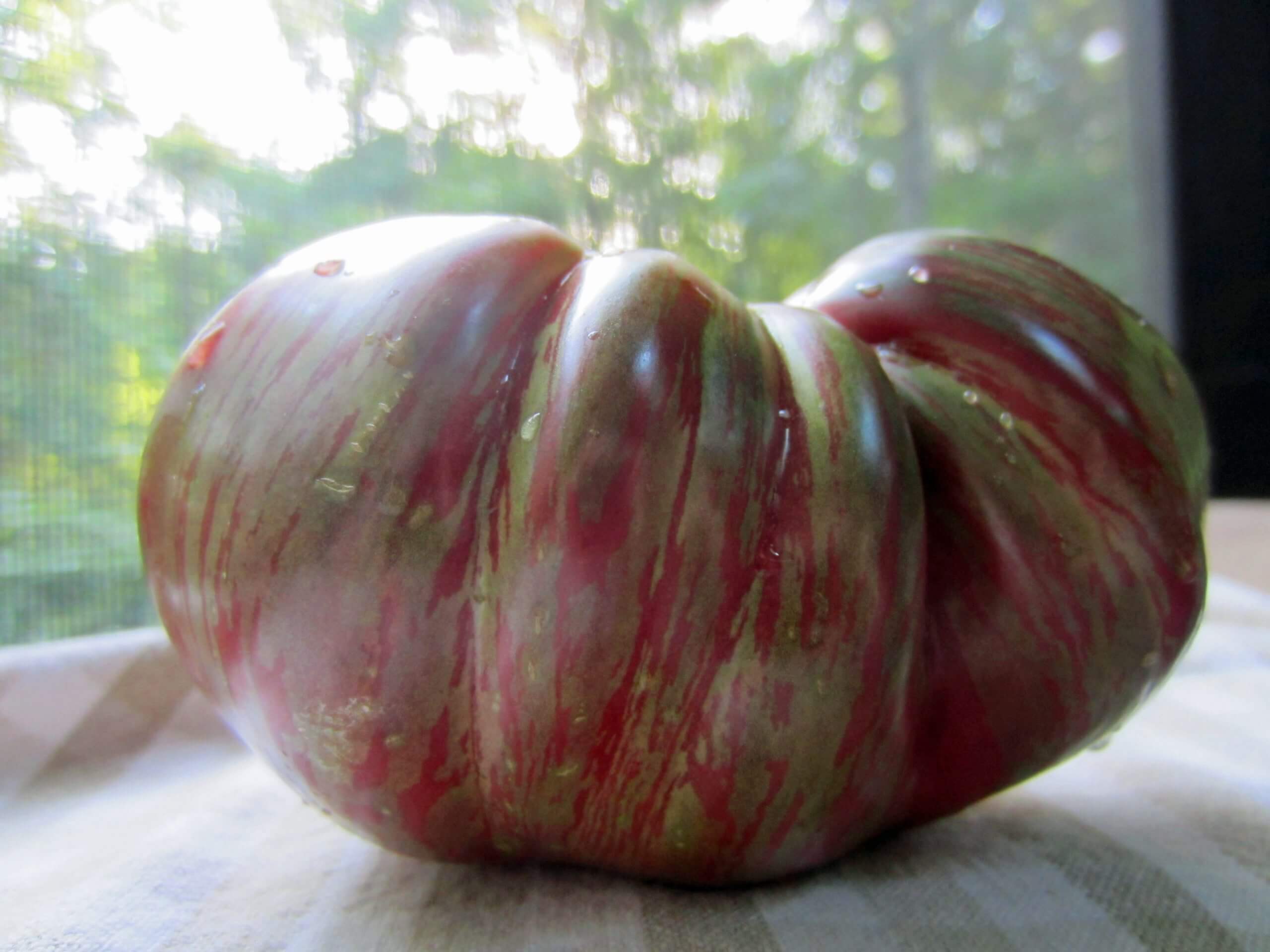
To Craig LeHoullier’s list I must add a remarkable tomato recently passed along to me by Gerald Adams, Grounds Supervisor of the North Carolina Executive Mansion, and another tomato fancier extraordinaire. Gerald’s pick is ‘Pink Berkeley Tie Dye’ (from California, of course), an unusual pinkish purplish fruit covered with almost chartreuse-colored stripes, and though it sometimes gets cat-faced, it definitely challenges ‘Cherokee Purple’ for sweetness. The one that Adams gave to me created one of the best BLT sandwiches I have enjoyed in a long time.
Gardeners often ask whether heirloom tomatoes are easier to grow, more prolific, hardier, or more disease-resistant than newly introduced varieties. The honest answer is, “not necessarily.” It really depends on the tomato, but all will grow better in well-amended garden soil and are ‘heavy eaters’ requiring applications of a quality fertilizer like a quality Tomato & Vegetable fertilizer, which is OMRI Listed for organic gardening. Provide full sun, adequate and even watering, and a cooling mulch at the base, such as Black Gold Garden Compost Blend, and plants should thrive. Plenty of elbow room between plants will also promote good air circulation for good health. Follow these simple tomato growing guidelines and your garden will be bursting with fabulous heirloom tomatoes.

